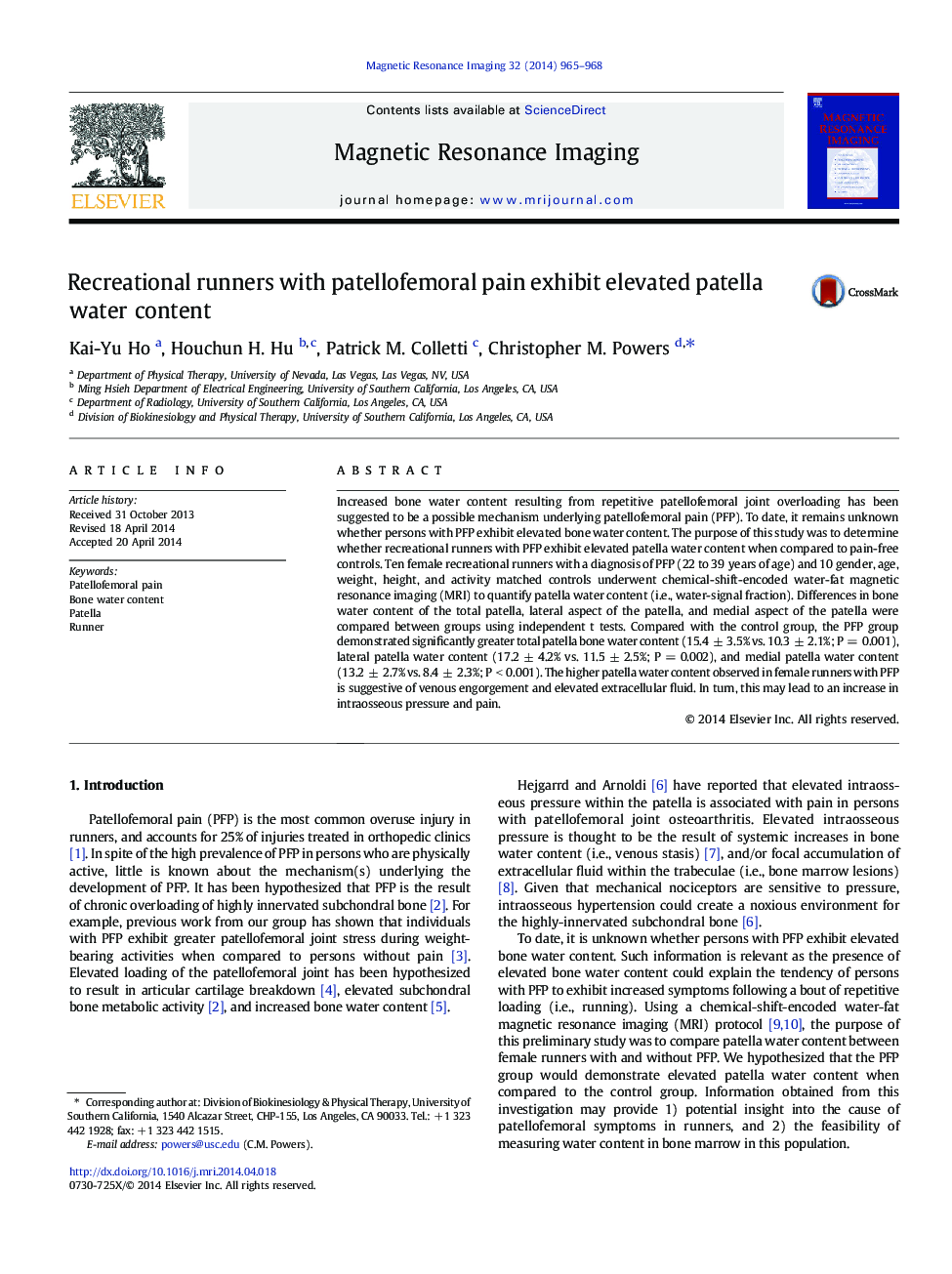| Article ID | Journal | Published Year | Pages | File Type |
|---|---|---|---|---|
| 1806429 | Magnetic Resonance Imaging | 2014 | 4 Pages |
Increased bone water content resulting from repetitive patellofemoral joint overloading has been suggested to be a possible mechanism underlying patellofemoral pain (PFP). To date, it remains unknown whether persons with PFP exhibit elevated bone water content. The purpose of this study was to determine whether recreational runners with PFP exhibit elevated patella water content when compared to pain-free controls. Ten female recreational runners with a diagnosis of PFP (22 to 39 years of age) and 10 gender, age, weight, height, and activity matched controls underwent chemical-shift-encoded water-fat magnetic resonance imaging (MRI) to quantify patella water content (i.e., water-signal fraction). Differences in bone water content of the total patella, lateral aspect of the patella, and medial aspect of the patella were compared between groups using independent t tests. Compared with the control group, the PFP group demonstrated significantly greater total patella bone water content (15.4 ± 3.5% vs. 10.3 ± 2.1%; P = 0.001), lateral patella water content (17.2 ± 4.2% vs. 11.5 ± 2.5%; P = 0.002), and medial patella water content (13.2 ± 2.7% vs. 8.4 ± 2.3%; P < 0.001). The higher patella water content observed in female runners with PFP is suggestive of venous engorgement and elevated extracellular fluid. In turn, this may lead to an increase in intraosseous pressure and pain.
